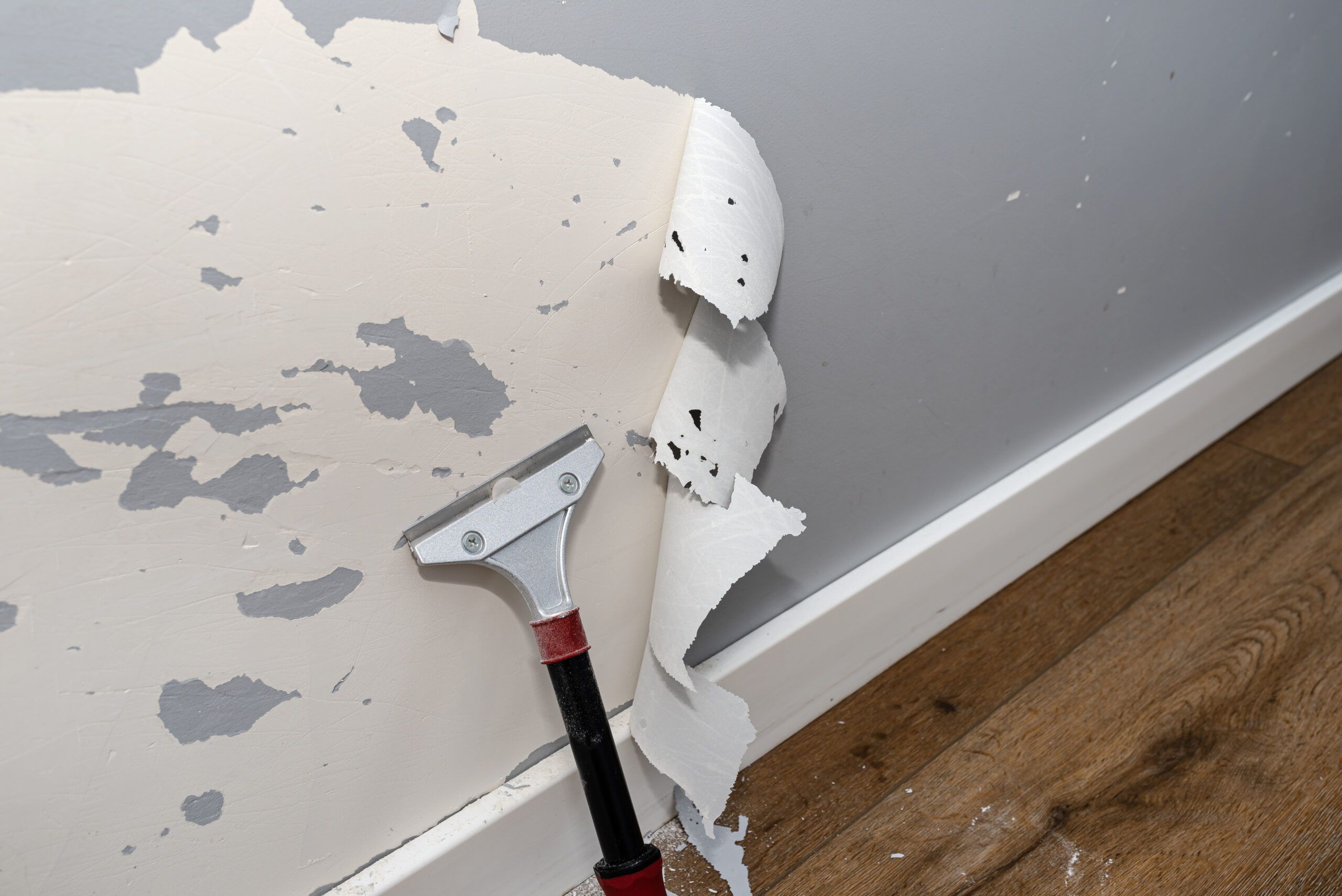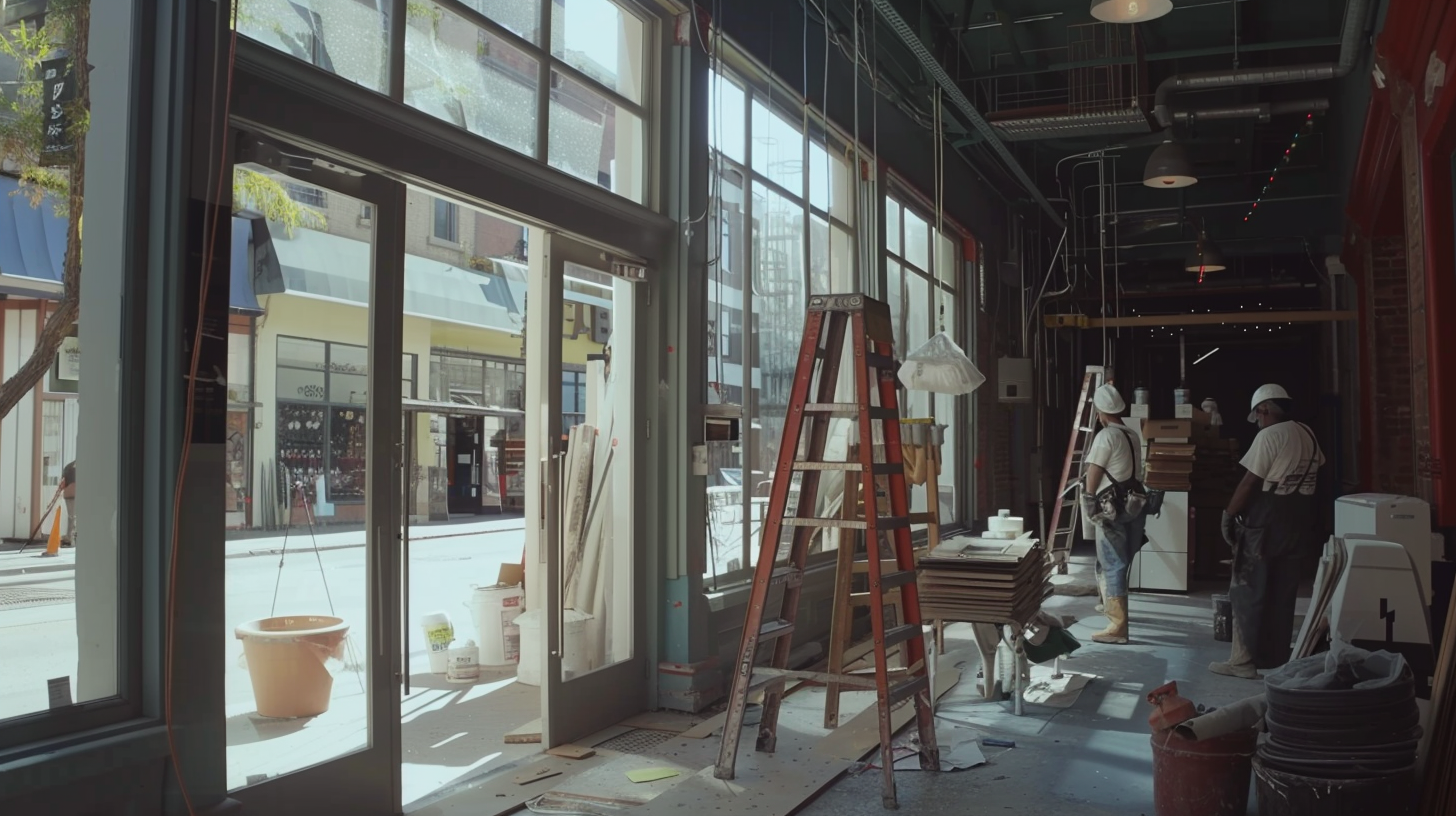Is Wallpaper Easily Removable?
Wallpaper was at the height of popularity during the swinging 1960s and funky 70s, only to gradually fall out of style in the following decades. However, all fashion trends tend to be cyclical, and wallpaper has found its way into many modern homes in the last five or six years. In fact, 96% of interior designers say it was the big trend of 2023, with no signs of it fading away anytime soon.
But why is it so popular again? Because of its stylishness, versatility, and ease of use. It’s easy to stick on, and more importantly, it’s simple to remove when you feel your space needs a decorative change.
So, is wallpaper easy to remove? If you know what you’re doing, you can remove and switch up the wallpaper in your home fairly often. Let’s look at different types of wallcoverings and how easily you can peel them off your walls.
Unpasted Wallpaper
Unpasted wallpaper is a type of wall covering that does not have adhesive pre-applied to its back. Many interior designers favor this type of wallpaper due to its thicker texture and better durability than pre-pasted or peel-and-stick options. Because it has no pre-applied adhesive on the back, you have greater flexibility when installing it and get a more professional-looking and long-lasting finish.
To install unpasted wallpaper, apply the adhesive separately and carefully stick the paper to the wall. This allows you to make adjustments during installation and ensures that the wallpaper is applied perfectly.
How Easy Is It to Remove
Removing unpasted wallpaper is moderately difficult and requires a lot of time and patience. If you want to make the removal process easier on yourself, you’ll also need a few tools extra tools, including:
- Sponge
- Spray bottle
- Scoring tool
- Steamer
To unstick the wallpaper from the wall, you’ll need to wet it thoroughly with water. You can also make the process extra easy by using a wallpaper removal solution. Score the wallpaper first so the water can penetrate it more easily. Wet small sections of the wallpaper with a sponge or spray bottle and really saturate them. The liquid must penetrate the paper and reach the adhesive so it can soften it.
Allow the wallpaper to absorb the moisture for a few minutes before peeling. If you’re still struggling with the glue, you might need a wallpaper steamer. The combination of moisture and high heat will melt the glue and allow you to strip the walls.
Once the adhesive softens, grab a corner and start peeling the paper. Hold the wallpaper at a 45-degree angle and slowly pull it up to avoid ripping it. This angle also helps minimize damage to the wall underneath. If the wallpaper tears or resists coming off, apply more liquid and let it soak for a few more minutes. This is where your patience pays off, as rushing can cause small pieces to tear off, making the process more tedious.
Ease of removal rating: Moderately hard
Pre-pasted Wallpaper
As the name suggests, pre-pasted wallpaper has already been pasted for you. That means it has a layer of adhesive on the back. That’s why it’s a lot easier to install and less messy as well. You don’t have to bother applying wallpaper paste separately because that part of the job is done for you.
Pre-pasted wallpaper is the wallcovering choice for many home improvement enthusiasts because you just spray the back to activate the glue and stick it to the wall. The adhesive is water-activated, simplifying the installation process. It’s much cleaner to work with since you don’t have to prepare and apply additional wallpaper paste.
How Easy Is It to Remove
Depending on the adhesive, this type of wallpaper is moderately easy to remove. You can do it while wet or dry, giving you some flexibility. To make it easier, you’ll also need a scraper, a scoring tool, and a sponge.
To see if you can remove it dry, you should:
- Use a scraper to pull up a corner and try to peel it off slowly
- If this method is working, keep peeling it up slowly
- Use the scraper to remove any small bits that remain stuck
If the dry method is ineffective, it’s time to try the wet method. To remove it wet, you must:
- Use a scoring tool to create tiny perforations in the wallpaper
- Wet a small area thoroughly
- Allow water to penetrate and soften the adhesive
- Once the adhesive has softened, start peeling off the wallpaper from a corner
- Peel it off at an angle to avoid tearing it
- If it snags or resists, apply more water and wait a bit longer before continuing.
Once the wallpaper is completely off, go over it with a sponge and water to remove any paste residue from the wall. Clean the wall thoroughly because any leftover adhesive will make it harder to put up new wallpaper or paint the walls.
Ease of removal rating: Moderate
Removable Wallpaper
Removable or peel-and-stick wallpaper is like a giant sticker you can apply to your walls. Unlike other types of wallpaper, you don’t need to activate any glue or adhesive. Instead, you peel off the backing and stick it wherever you want.
Due to this convenient installation process, removable wallpaper is increasingly popular, especially among renters and students in dorm rooms who enjoy stylish interior design but still want their deposit back. It’s also a hit with people who may not be able to commit to one design and change their home decor frequently. The market trends reflect this growing appeal, with sales projected to reach $2.43 billion by 2032.
How Easy Is It to Remove
When it comes to removal, removable wallpaper is the easiest available option. You can take it down in minutes without causing any damage to the walls. You don’t need special tools and won’t have to worry about cleaning up sticky residue afterward. The removal process is straightforward:
- Find a good corner and start peeling off the wallpaper
- Hold it at an angle and pull it slowly upwards so it comes off in one piece
- If it tears, use a dull knife to scrape off the remaining bits gently
This simplicity makes removable wallpaper an excellent option for those who like to refresh their decor frequently or need a temporary solution for their walls. Whether you’re a renter, a student, or someone who loves to update your living space, removable wallpaper is an easy, damage-free way to transform your walls.
Ease of removal rating: Easy
What Affects Wallpaper Removability
While the type of wallpaper you have certainly affects how easily you can take it off, it’s not the only factor that can complicate things. The ease of removal can depend on many factors, from how much glue was used to stick the wallpaper to the condition of the walls. Let’s see what can make removal harder or easier.
Age of the Wallpaper
Older wallpapers are much harder to remove. They used powerful adhesives because they wanted them to last for decades. With time, the glue bonds more firmly to the wall, making the removal process more labor-intensive. Often, you have to use steam or specialized chemicals to dissolve the glue on older wallpapers.
On the other hand, more modern wallpapers are much easier to remove because manufacturers know people like to change things up. These wallpapers often come with easily dissolved adhesives, sometimes even allowing for dry peel-off. If you’re dealing with an older home with outdated wallpaper, be prepared for a more challenging removal process.
The Type of Adhesive
Different wallpaper adhesives have varying strengths. Water-soluble adhesives are generally easier to remove. You can often loosen them with water or a mild wallpaper removal solution. Permanent adhesives pose a more significant challenge. They are very durable, making them resistant to water and other solvents.
Removing wallpaper with permanent adhesive requires more aggressive methods, such as scoring the wallpaper and applying a more potent removal solution. Knowing what adhesive you’re dealing with can help you prepare for the removal.
The Condition of The Wall
If your wall is primed and completely dry, installation and removal will go smoothly. A properly primed wall provides a smooth, sealed surface that prevents the adhesive from over-bonding with the wall material.
However, if the wall has even a bit of moisture, it can cause the glue to penetrate deeper, making removal more difficult and potentially tearing off bits of the wall along with the wallpaper. Damaged walls also complicate the removal process because they can get even more damaged. Cracks, holes, or peeling paint can catch on the wallpaper as you pull it off, leading to further deterioration.
The Quality of Installation
How well the wallpaper was put up also affects how well it will come down. Using too much adhesive can make the wallpaper bond too strongly with the wall, leading to potential damage when you try to remove it.
On the other hand, if the adhesive is applied unevenly or air bubbles are left trapped under the wallpaper, these can create weak spots. While these weak spots might seem like they would make removal easier, they often lead to a patchy and uneven removal process.
Balance Style With Ease of Removal
Wallpaper is a quick and stylish way to add elegance or pizzazz to your home. Still, it’s important to consider the removal process and the installation. Determine the effort you’re willing to put into stripping it down when it’s time for a change.
Removing wallpaper isn’t complicated, but the ease of the process largely depends on the type of wallpaper you have. Some wallpapers peel off with minimal effort, while others require more elbow grease and time. Still, the process isn’t too hard – you just have to decide how willing you are to commit to it.

